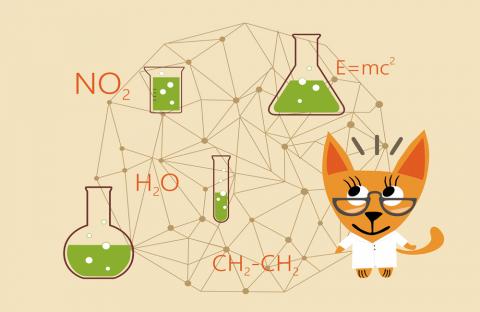Nearly any trend or issue in human food plays out in pet food, too–and not just when it comes to product development or consumer needs. To wit: “Effective science communication and debunking misinformation are very difficult and require work. Perhaps the best ways to promote scientific literacy are to teach people to understand the basics of scientific method and to increase transparency.”
Those words sound as though they could have been written about misunderstandings regarding pet food and pet nutrition, don’t they? In fact, they were written about the human food industry, in an article by Toni Tarver in Food Technology magazine. The article summarized the main points of several presentations on pseudoscience during IFT16, the large annual food expo and conference hosted by the Institute of Food Technologists (which also publishes the magazine).
Consider the titles of the presentations: Science Versus Sensationalism and Soundbites: How Can Consumers Make More Informed Choices?, Taming Dragons in the Age of Pseudoscience, Telling the Story of Science in an Age of Misunderstanding. Any of those would look right at home on the program for Petfood Forum or another pet food-related conference.
The basic premise of all three IFT sessions boiled down to one fact: Many people have become distrustful of science and scientists, perhaps because of a lack of understanding about it or because sometimes scientific research or science-based facts don’t support their views. “Society is participating in a state of aware-unawareness, which is based on selective reception and transmission of knowledge, uncertainty and an unwillingness to know facts,” Tarver wrote in conveying the main theme of a presentation by Jacques Rousseau of the University of Cape Town in South Africa.
“The internet and social media have become highly effective tools for people who participate in aware-unawareness,” Tarver continued. “Through confirmation bias, a person can use the internet to find more and more information that corroborates her point of view and, through social media, get many people to accept and adopt his distorted beliefs. Rousseau said that humans are naturally predisposed to finding confirmatory material that proves their beliefs. This is why food bloggers with no formal education in food science, nutrition or related area of expertise feel confident in espousing erroneous information.” The same could be said for many websites that rate or criticize pet food.
Both human food and pet food are battling a growing unease, even fear, of science. Another IFT speaker, Bev Postma, an international policy specialist and founding member of Food Industry Asia, said she was initially baffled by the arguments of anti-GMO activists, which seemed at odds with her scientific training. “But as she listened to close friends and relatives who seemed to be on the side of naysayers, she realized it wasn’t the technology that they feared; they just had a major distrust of scientists,” Tarver wrote.
Surveys of pet food consumers have shown the same sentiment. Research conducted by Nielsen in 2015 among 3,562 US and French pet owners revealed beliefs that pet foods with claims such as “scientifically formulated” have fallen out of favor. “Overall, the claim ‘scientifically formulated’ performed poorly when tested with consumers in actual product concepts; it appeared in only one top concept, where it generated mixed reactions,” the report said.
Getting down to emotions
The IFT presentations seemed to focus on pseudoscience, perpetuated by self-declared experts with no scientific background or understanding of food science, or even scientists with credentials but who conduct poor, unscientifically sound research and spread unreliable, false or even debunked results. (Andrew Wakefield was given as an example.)
While some people peddle pseudoscience about pet food, too, a bigger issue with our industry may be the small amount, or even complete lack in some areas, of sound, peer-reviewed, publicly available research on pet food and pet nutrition, safety and technology. Yet the experiences of the human food industry indicate that even having that research is not enough, if people refuse to understand it or accept it (or are unable to).
How can this be resolved? As mentioned, Tarver suggested transparency and educating consumers on the basics of scientific method – which seems like a tall order for producers, whether in human food or pet food, at least the education part. (And, one could argue that is supposed to be the job of our education systems.) Transparency is important and something consumers definitely want, but companies often seem to struggle with implementing the concept.
That could be because consumers, bloggers and others are not being engaged at the emotional level first. “Human brains are programmed to feel first (emotion) and think later (logic/reason),” Tarver wrote. “Emotion and instinct usually overpower purposeful reason.” This applies to pretty much everything, but especially areas where people are particularly passionate: their pets, their human families and how they feed them. Even love of animals overall; the poultry industry, for example, is starting to recognize that to have meaningful dialogue with animal welfare groups, they need to be start with emotions.
Tarver wrote that Postma suggested ways for scientists–which could translate to anyone in the industry, in my mind–to better engage with consumers and pseudoscientists. These include entering every conversation assuming there’s something to learn; keeping calm, asking questions and expressing empathy (rather than firing off facts and evidence-based opinions); and listening to understand, not just to form a reply. “Once the emotional barrier is breached, scientists can steer the conversation to the many ways that science and technology benefit society,” Tarver wrote. This could apply to other forms of communication with pet parents as well.


Spread the word